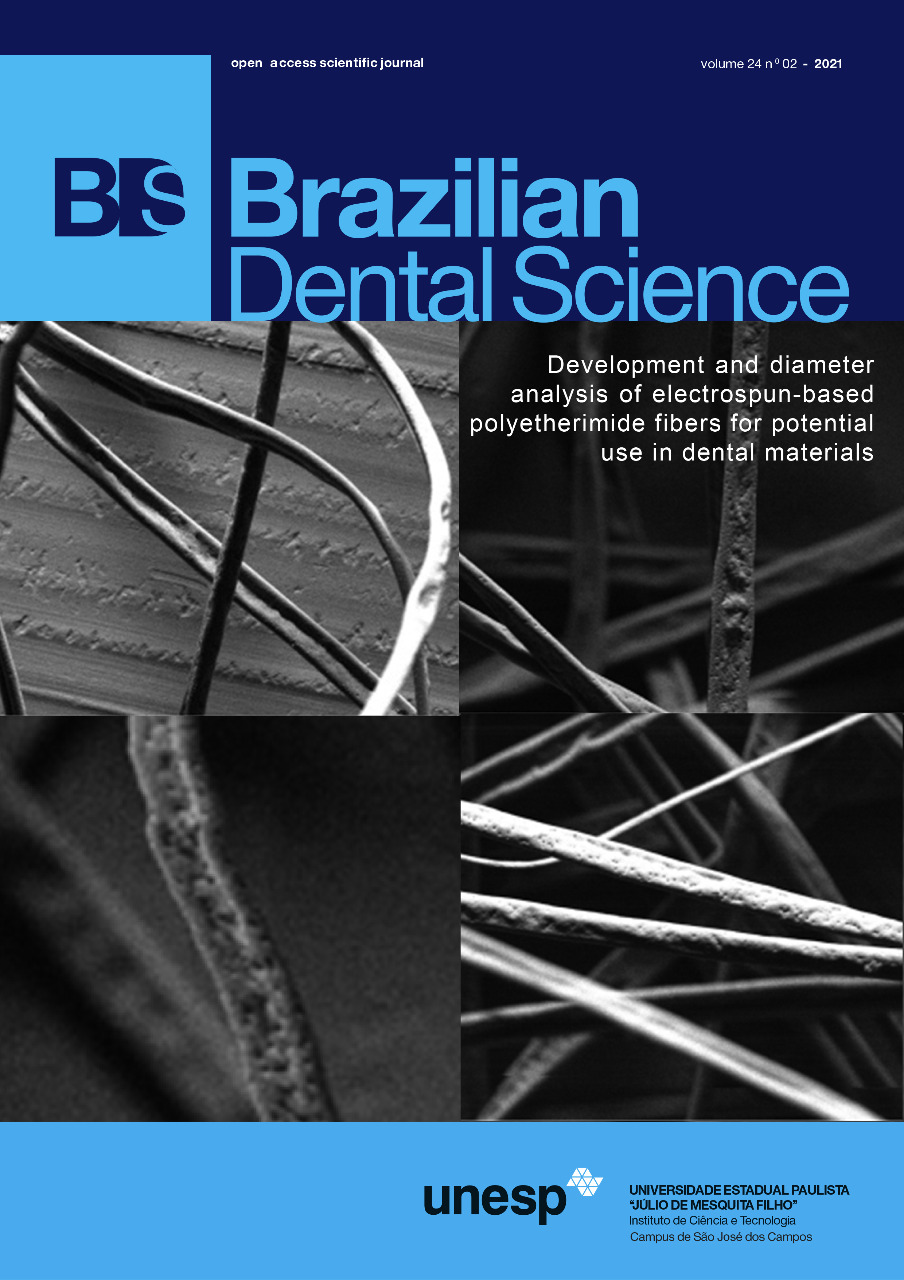Effect Of Chitosan Treatment On Shear Bond Strength Of Composite To Deep Dentin Using Self-Etch And Total-Etch Adhesive Systems
DOI:
https://doi.org/10.14295/bds.2021.v24i2.2440Resumo
Objective: To assess the shear bond strength (SBS) of resin composite to deep dentin, using 1 and 2.5% chitosan pretreatment as well as different adhesive systems. Material and Methods: 80 human maxillary molars were randomly divided to eight groups according to the type of adhesive system and dentin pretreatment (n = 10): I) two-step self-etch system (Clearfil SE bond); II) two-step etch-andrinse system (Adper single bond 2); III) 2.5% chitosan + Clearfil SE bond; IV) 2.5% chitosan +etch + Adper single bond 2; V) etch + 2.5% chitosan + Adper single bond 2; VI) 1% chitosan + Clearfil SE bond; VII) 1% chitosan + etch + Adper single bond 2; VIII) etch + 1% chitosan + Adper single bond 2 (chitosan solution (w/v): 2.5 g and 1 g of chitosan (Sigma Aldrich, USA) was dissolved in 100 ml of 1% acetic acid). Plastic molds were positioned on dentin and filled with composite (Z350, 3M ESPE, USA). SBS (MPa) was tested using a universal testing machine. ANOVA tests, Tukey’s test, and independent t test were used to analyze data (p < 0.05). Results: The highest SBS value among self-etch groups was observed with 1% chitosan (p = 0.001). In the etch-and-rinse group, the SBS of 1% chitosan was significantly lower than the other groups. Chitosan treatment following acid etching led to higher SBS in comparison to when chitosan was applied before etching, with the significant difference in 1% concentration (p = 0.030). A predominance of mix fractures was observed in dentin. Conclusion: Improved dentin bond strength can be achieved through immediate dentin pretreatment with 1% chitosan in self-etch adhesive systems. Chitosan Pretreatment may not be advantageous for etch-and-rinse adhesive systems.
Keywords
Adhesive system; Chitosan; Deep dentin; Shear strength.
Downloads
Downloads
Publicado
Como Citar
Edição
Seção
Licença
TRANSFERÊNCIA DE DIREITOS AUTORAIS E DECLARAÇÃO DE RESPONSABILIDADE
Toda a propriedade de direitos autorais do artigo "____________________________________________________________________" é transferido do autor(es) para a CIÊNCIA ODONTOLÓGICA BRASILEIRA, no caso do trabalho ser publicado. O artigo não foi publicado em outro lugar e não foi submetido simultaneamente para publicação em outra revista.
Vimos por meio deste, atestar que trabalho é original e não apresenta dados manipulados, fraude ou plágio. Fizemos contribuição científica significativa para o estudo e estamos cientes dos dados apresentados e de acordo com a versão final do artigo. Assumimos total responsabilidade pelos aspectos éticos do estudo.
Este texto deve ser impresso e assinado por todos os autores. A versão digitalizada deverá ser apresentada como arquivo suplementar durante o processo de submissão.




























